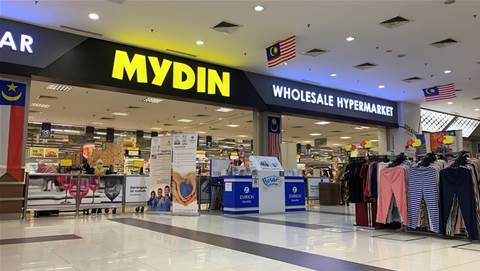Changi Airport Group is using an internal "accelerator" to champion ideas from employees and flip them into digital solutions, with a real-time emergency services app and expansion of an e-inspection platform among its early wins.
Vice-president of organisation process transformation and digitalisation, Chan Meng Chong, told the Innovation@Work Asia summit run by Economist Impact that the “accelerator office” started as a way to encourage innovation during the pandemic period.
“It’s a one stop place where any employee with any idea can come and just bounce ideas and ask questions in a very safe way,” Chan said.
“We can [also] help them design a solution and connect them with the right resources to implement the solutions.
“We’ve had fair success in that.”
Chan called out two use cases that had been run through the accelerator office.
He said the office was approached by a member of airport emergency services seeking a way to digitally track, in real-time, a sea rescue scenario, which is regularly trained for.
Emergency services needed a way to keep track of vessels and account for the whereabouts of passengers that had been saved. It also wanted to be able to plot the vessel locations graphically.
Chan said that an application has now been developed through the accelerator that is built on Microsoft Power Apps.
Power Apps was flagged for potential organisation-wide use at Changi Airport Group late last year.
“They have a system they’re going to test out to make sure connectivity at sea works so they can report back the status of the passengers’ safety in a sea rescue scenario,” Chan said.
In another use case, Chan said the accelerator had been able to find additional use cases for an existing e-inspection platform built by the group’s engineering function and to help in incorporating those use cases.
“Because Changi Airport is so huge, there’s a lot of inspection that goes on,” Chan said.
“There’s a class of use cases that we call e-inspection applications, where teams on the ground need to go down and check for wildlife on the airside, or to check the toilets are clean, or to make sure the walkways are clear.
“So we do have a platform built by our engineering team that serves this need. We didn’t know about this platform [initially] - we learned about it - and then we were saying let’s brainstorm some of these e-inspection solutions.
“We realised we could move a lot of use cases to this platform that one particular team was using. So the accelerator has the benefit of seeing across different use cases; we see patterns and then we can see maybe there’s a [existing] platform or we can architect solutions for the enterprise in a different way.”
New tech directions
Chan said that Changi Airport Group is running a series of internal centres of excellence (CoEs) that the accelerator is able to harness and connect staff to.
Chan himself runs a CoE for in-house-built applications. More broadly, the group has “a digital experimentation centre of excellence, and a data science and data analytics centre of excellence as well.”
“So we have all this expertise, and the challenge for the teams on the ground is sometimes there’s just so much going on that they may not keep tabs [on all the capabilities the group has],” he said.
“We [the accelerator] act like a one-stop.”
More broadly, the accelerator itself is keeping watch on emerging technologies and looking for potential use cases.
AI, blockchain and the metaverse are all under watch, though Chan said airport operational use cases for blockchain are “not very clear yet”.
“We may [also] be trying to look into metaverse as a new way of engaging customers but nothing concrete yet,” he said.
He added that the company typically maintained a three-to-five-year outlook on technologies under watch.
Automation to maximise land use
Changi Airport Group remained focused on improving customer experiences, particularly as travel resumed.
Technology is considered a critical input to customer experience, particularly due to land area constraints for the airport itself.
Chan said that automation technology meant passengers flowed through airport checkpoints more smoothly, reducing queuing, but also reducing the floor space required for functions like check-in or bag drop.
“The drive behind our automation efforts really is about trying to relieve the constraints we have on the physical space,” Chan said.
“One of our key priorities is the capacity of the airport, and when we talk about increasing capacity, there’s just a limit to what we can do.
“Although we are reopening the terminals now and building a new Terminal 5, physical capacity once built is more or less fixed, so what technology can do for us is help us flow passengers through the airport more efficiently so we need less space to accommodate queueing.”
Employee assistance
Chan also touched on a possible “conversation-enabled transaction” engine that may be built in future to assist employees.
This would ideally be voice-enabled, like a corporate Siri, but could also wind up being text-based.
Chan said that the technology is now available to enable Changi Airport Group to start down this path.









